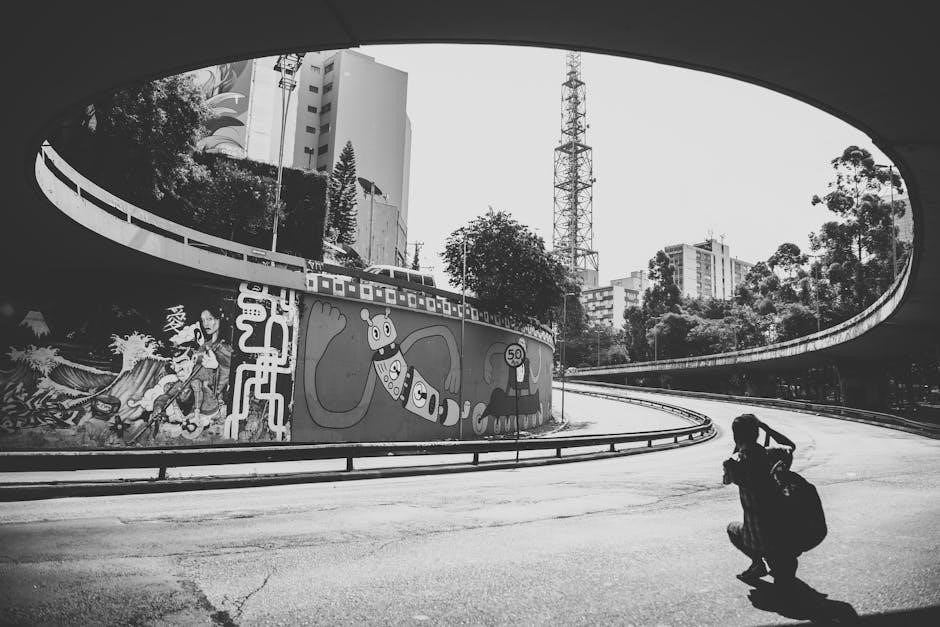Overview of “Y no se lo tragó la tierra”
Tomás Rivera’s “Y no se lo tragó la tierra” is a poignant novel depicting the Chicano migrant worker experience through the eyes of a young boy. It explores themes of faith, identity, and the struggles of survival in harsh conditions. The narrative weaves together vignettes of the migrant experience.
Synopsis of the Novel
Set against the backdrop of 1950s Texas, “Y no se lo tragó la tierra” chronicles the arduous lives of a Mexican-American migrant family. The narrative unfolds through the fragmented memories of a young boy who has lost his name and seeks to understand the injustices surrounding him. The boy listens to stories about his family, like his uncle and aunt.
The novel delves into their daily struggles: back-breaking labor, poverty, discrimination, and the constant threat of illness and death. As the boy pieces together the fragments, he grapples with his faith, questions God’s existence, and ultimately confronts the harsh realities of their existence, searching for an understanding of their place in the world.

Themes in “Y no se lo tragó la tierra”
“Y no se lo tragó la tierra” intricately explores themes of faith, identity, and the migrant experience. It portrays the characters’ struggles against social injustice, poverty, and the search for meaning amidst hardship and uncertainty.
The Migrant Worker Experience
Rivera’s novel vividly portrays the harsh realities of migrant workers in the 1950s. Families endure backbreaking labor in fields, facing exploitation and deplorable living conditions. Poverty, discrimination, and lack of access to basic necessities are constant challenges. The constant movement and instability create a sense of displacement and rootlessness. Children are forced to work, sacrificing their education and childhood. The novel exposes the systemic inequalities faced by migrant workers, highlighting their resilience in the face of adversity. The experience shapes their identity and worldview, fostering a strong sense of community and shared struggle against injustice.
Loss of Faith and Religious Struggle
Within the narrative, characters grapple with profound doubts about their faith. The relentless suffering and injustice they face lead some to question God’s existence or benevolence. The traditional religious beliefs passed down through generations are challenged by the harsh realities of their lives. The young protagonist’s journey involves questioning religious dogma and seeking a personal understanding of faith. For some, the loss of faith leads to anger and resentment, while others find solace in alternative forms of spirituality or community. The novel explores the complex relationship between faith, suffering, and the search for meaning in a world marked by hardship and uncertainty. This inner conflict is a key element.

Literary Analysis
Rivera’s work employs a unique narrative structure, blending fragmented stories into a cohesive whole. His masterful use of language captures the oral tradition of the Chicano community. The novel’s impact lies in its raw and authentic portrayal of migrant life.
Narrative Structure and Perspective
The novel’s narrative structure is fragmented, mirroring the disjointed lives of migrant workers as they move from place to place. Told through the eyes of a young, unnamed boy, the story unfolds as a series of interconnected vignettes, capturing moments of hardship, resilience, and cultural identity. This perspective provides an intimate and often painful glimpse into the challenges faced by the characters. The nonlinear structure reflects the cyclical nature of migrant life, emphasizing the repetition and uncertainty that define their existence. Rivera masterfully uses this structure to convey the collective experience of a community.
Use of Language and Oral Tradition
Rivera’s masterful use of language reflects the oral tradition of the Chicano community, capturing the authentic voices and rhythms of their speech. The novel incorporates both Spanish and English, reflecting the bilingual reality of the characters’ lives and adding depth to their cultural identity. This linguistic blend highlights the tensions and negotiations between cultures. The narrative mimics the storytelling style of oral tradition, relying on anecdotes, dialogue, and vivid descriptions to convey meaning. This emphasis on orality underscores the importance of community and shared experiences in preserving cultural heritage amidst adversity.
Critical Reception and Impact
“Y no se lo tragó la tierra” has garnered significant critical acclaim for its powerful portrayal of the Chicano experience. It is recognized for its literary innovation and profound impact on Chicano literature, securing Rivera’s place as a major voice.
Awards and Recognition
“Y no se lo tragó la tierra” received the prestigious Premio Quinto Sol literary award in 1970, catapulting Tomás Rivera to national recognition. This accolade marked a turning point, validating the importance of Chicano voices in American literature. The novel’s impact resonated deeply, leading to its widespread adoption in academic settings and community reading programs. Its raw and honest portrayal of the migrant experience touched readers across diverse backgrounds, fostering empathy and understanding. The Premio Quinto Sol was a testament to Rivera’s profound contribution and a significant milestone for Chicano literature, paving the way for future generations of writers.
Influence on Chicano Literature
“Y no se lo tragó la tierra” stands as a cornerstone of Chicano literature, profoundly influencing subsequent generations of writers. Tomás Rivera’s unflinching portrayal of the migrant experience shattered stereotypes and gave voice to the marginalized. The novel’s innovative narrative structure and authentic use of language inspired a wave of Chicano authors to explore their own cultural identities and lived realities. Rivera’s work paved the way for greater representation of Chicano perspectives in mainstream literature, fostering a sense of pride and solidarity within the community. His legacy continues to resonate, empowering writers to challenge social injustices and celebrate the richness of Chicano culture through storytelling.

Author Tomás Rivera
Tomás Rivera (1935-1984) was a Chicano author, poet, and educator. His masterpiece, “Y no se lo tragó la tierra,” earned him national recognition. Rivera’s work explored the experiences of migrant workers and the struggles of the Chicano community.
Rivera’s Life and Background
Tomás Rivera, born in 1935, experienced the life of a migrant worker firsthand, traveling with his family across the United States. This experience deeply influenced his writing and provided the foundation for his powerful stories. Rivera’s early life instilled in him a profound understanding of the challenges faced by migrant communities. He pursued education, eventually earning a Ph.D. and becoming a respected educator and administrator. His commitment to education and his literary contributions made him a significant figure in Chicano literature. Rivera’s life experiences directly shaped his literary voice and his dedication to portraying the realities of migrant life.
Rivera’s Literary Contributions
Tomás Rivera’s most significant literary contribution is undoubtedly “Y no se lo tragó la tierra,” a groundbreaking novel that brought Chicano literature to a wider audience. Rivera’s work is characterized by its authentic portrayal of migrant life, its innovative narrative structure, and its use of language that reflects the oral traditions of the Chicano community. He captured the struggles, hopes, and resilience of migrant workers with profound empathy and insight. Rivera’s writings have had a lasting impact on Chicano literature, inspiring generations of writers and readers. His legacy extends beyond his fiction, as his essays and speeches also contributed to discussions about identity, culture, and social justice.

Editions and Translations
“Y no se lo tragó la tierra” has been widely published in both Spanish and English, ensuring its accessibility. Different publishing houses have released various editions, contributing to its sustained readership and critical acclaim over the years.
Availability in Spanish and English
Tomás Rivera’s seminal work, “Y no se lo tragó la tierra,” enjoys broad availability in both its original Spanish and translated English versions, titled “And the Earth Did Not Devour Him.” This dual availability ensures that the novel reaches a wide audience, encompassing both Spanish and English speakers, thereby amplifying its impact on diverse readerships. The presence of both language versions allows for deeper engagement with the text, facilitating comparative analysis and a richer understanding of its themes and cultural nuances. Access in both languages is crucial for its literary and educational value.
Different Publishing Houses
“Y no se lo tragó la tierra” has been published by several publishing houses, including Arte Público Press and Corregidor, reflecting its significance in Chicano literature and its widespread appeal. These different editions ensure the book’s accessibility across various regions and markets. Each publishing house may offer unique features such as different covers, introductions, or critical essays, enriching the reading experience. The availability through multiple publishers underscores the novel’s lasting importance and its continued relevance in academic and literary circles. This multi-publisher presence helps in disseminating Rivera’s powerful narrative to a broader audience, solidifying its place in literary history.
Related Scholarly Articles
Scholarly articles analyzing “Y no se lo tragó la tierra” often explore themes of orality and writing, examining how Rivera incorporates oral traditions into his narrative structure. These articles provide deeper insights into the novel’s literary techniques.
Analysis of Orality and Writing
Critical analyses of “Y no se lo tragó la tierra” frequently focus on the interplay between orality and writing in Rivera’s narrative. Scholars like Manuel Martín-Rodríguez have explored how Rivera translates the spoken word and storytelling traditions of the Chicano community into a written form. The novel’s structure, resembling a collection of anecdotes and personal accounts, reflects this oral tradition. Rivera’s use of colloquial language and dialogue further emphasizes the importance of the spoken word. This blend of orality and writing contributes to the novel’s authenticity and its powerful portrayal of the migrant worker experience, preserving cultural heritage through literary expression.
